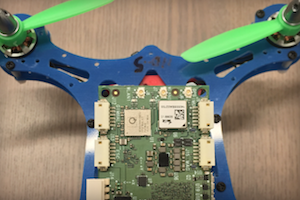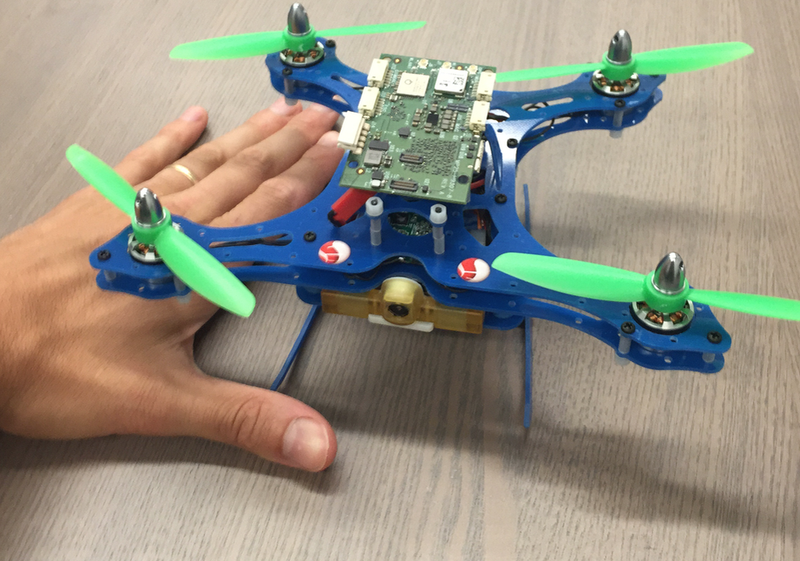Source: Ben Popper via The Verge
The market for consumer drones is exploding, projected to grow from $105 million this year to $1 billion by 2018. These flying robots are allowing the average consumer to capture Hollywood-caliber aerial footage and dramatically raising the bar for what qualifies as a cinematic selfie. But the average 4K camera drone these days is still about $1,200, with a battery that lasts just 20 minutes, two drawbacks that limit their mass appeal.
Enter Qualcomm, the chip maker whose Snapdragon processors power the vast majority of today’s high-end smartphones. It recently announced that it will produce a modified version of this chipset optimized for drones, the Snapdragon Flight. Raj Talluri, the engineer and executive in charge of the project, says it could be the first step toward making high-quality drones as mainstream as digital cameras used to be. “We believe that, with this chip, we can cut the price of the average 4K camera drone from $1,200 down to $300 or $400. And we think we can extend the battery life from 20 minutes to 45 to 60 minutes,” says Talluri. “That will open them up to a much broader audience and a whole new range of applications.”
DRONES ARE THE PEACE DIVIDEND OF THE SMARTPHONE WARS
Drones may never be as ubiquitous as smartphones, but the two devices do have a lot of similarities. Chris Anderson, former editor ofWired and current CEO of drone startup 3D Robotics, has said that “drones are the peace dividend of the smartphone wars.” By that he means there is a broad overlap in terms of the central components, and that the massive smartphone market had done the heavy lifting of bringing down the size and cost of these components. Not surprisingly Qualcomm, which is an investor in 3D Robotics, believes a similar thesis.
“When you look inside today’s drone’s there is often a hodgepodge of different chips, each doing a specific job. In many cases we found the chips were not purpose built for drones,” says Talluri. “Each time those chips need to talk with one another, or talk with a mechanical component in the drone, that draws down power which you could otherwise use to stay in the air.”
The drone market is especially attractive for Qualcomm because it doesn’t have to invest billions researching a new chip or building a new fab. It can simply modify the existing Snapdragon chip to optimize if for drones. “As we examined what drones are being asked to do, we found a lot of overlap with the smartphones, which we have so much experience building chipsets for,” explained Talluri. “The drone relies on Wi-Fi and radio signals, gyroscopes, accelerometers, and magnetometers,” says Talluri.
The ability to get the most out of a small camera is another similarity between drones and phones. “[A drone’s] principle function is often to record images, and of course we have a lot of experience in that area with phones, creating chips that are optimized for shooting high-resolution photos and video with a very small camera, for software-driven image stabilization, and in some cases for simultaneously recording that footage and streaming it live.” Qualcomm says the chip is also equipped to handle the complex processing required for obstacle avoidance technologies like computer vision.
NO ONE HAS BUILT A FLYING SMARTPHONE… YET
To get a sense of what drones might become to the average consumer, it helps to travel back in time 10 years, before the release of the iPhone or Android, when there was a robust market for personal cameras and camcorders. Smartphones gradually took over that market, with their 12-megapixel cameras and gorgeous 4K video — why get a single-purpose device when your phone could do the same thing, probably better? But drones can once again take video to somewhere smartphones can’t, which leaves an opportunity for a new product category, one that players like GoPro and DJI are eager to capitalize on.
“I’m an old school camera guy, I worked on a lot of technology that went into the first wave of handheld camcorders,” says Talluri. “What those did, in terms of reducing the size and price of a video recorder, compared to what was standard in the television industry at the time, was amazing.” Qualcomm is betting that, by dramatically reducing price and extending battery life, its chips can help drones pull off that same feat, moving beyond film professionals and hardcore hobbyists to reach the average consumer. “I believe we will see a similar revolution with drones over the next few years.”


